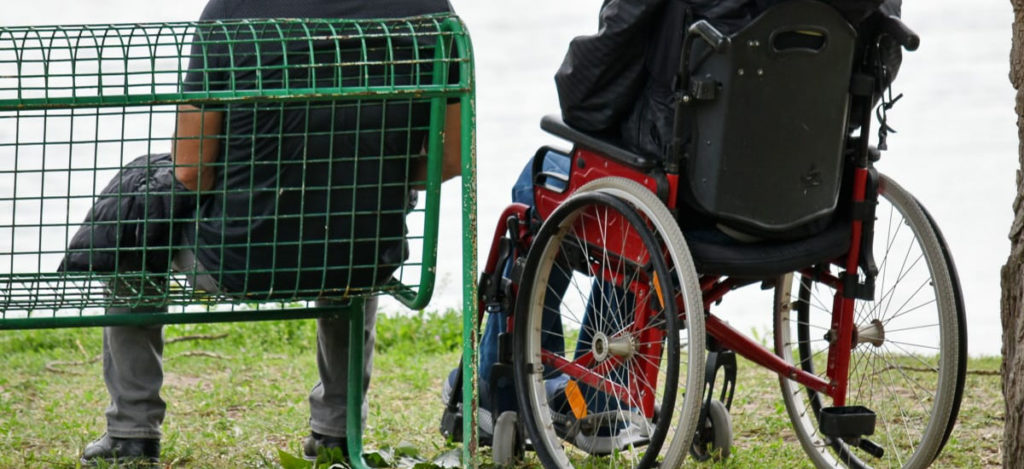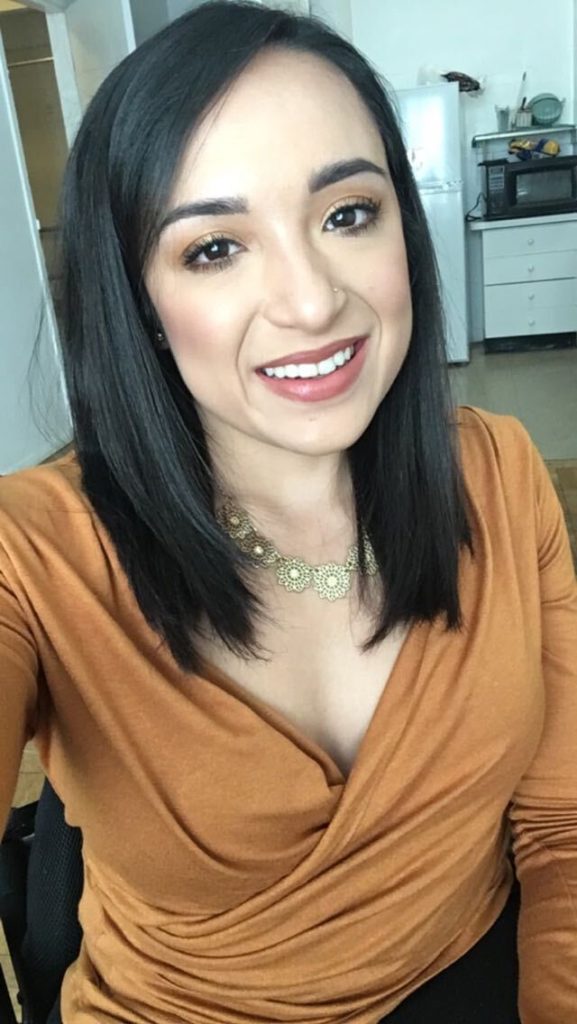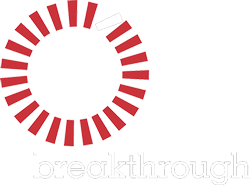
COVID-19 & the response to it shows how dangerously inaccessible safety nets are for people with disabilities
By Cheyenne Leonard
COVID-19’s impacts have already been immense and aren’t even fully realized, yet we do know the virus impacts disabled people more than able-bodied people. Although people with dissimilar disabilities and situations are impacted differently, I’m telling my story of how COVID-19 has affected me as a wheelchair user so that others in a similar circumstance don’t feel alone.
I moved to New York at the end of August 2019 from Las Vegas, Nevada. I left my entire support system to move across the country and attend New York University for a master’s degree in Media, Culture, and Communication. This was a huge decision that required a well-thought-out plan. I showed up to my graduate housing apartment in Greenwich Village armed with every medication I could possibly need. My mom was to mail me my medications and other necessary medical supplies once a month.
My first semester went as well as it could have. My cohort at school was incredible and extremely mindful of my accessibility needs. I found a group of New Yorkers in wheelchairs who invited me to brunches and get togethers and taught me how to use public transit and commiserated with me about the ins and outs of disability in New York. I jumped at the chance to be active in NYU’s Center for Disability Studies, attending events and talking with the professors in an effort to learn how I could become more involved.
I was beginning to establish a support system in my new city. I was excelling in school, ending my first semester with straight As and remarks from my professors that I wrote some of the best work they had ever read and opened their eyes to issues they had never thought of. I was beginning to see my career take shape. I had been modeling for brands like FFORA, Zappos, and Pinterest. I was an extra in some major productions.
That was before COVID-19 hit. I came back to New York on January 27, 2020, after spending winter break in Las Vegas. I was excited to get back to my New York friends, begin new classes, and see what new and exciting things this semester had in store for me. In the beginning, I remember getting frequent updates from NYU saying that there was no need to worry because there were no cases of the virus in New York. Then, the emails assured us that although cases existed in New York, no one at NYU had it. On March 9th, my professor told me she highly doubted NYU was going to move classes online. That was the last class I attended in person, with NYU sending out an email later that day declaring the move to online classes
The school also sent an email asking students in campus housing to fill out a survey on their plans for Spring Break, but assured us that the dorms were staying open. A week later, students were receiving emails that they had four days to evacuate residence halls, but the university preferred they be out within 48 hours.
This was clearly not a decision made with disabled students in mind. Students who are immunocompromised were now expected to travel and were put in a situation where they were vulnerable to the virus. Students who were not physically able to pack their belongings themselves had to trust strangers to pack their things and send it to them. Students who relied on the school health insurance and medical care were forced to find alternatives.
RELATED: Mindy Scheier, CEO of Gamut Management interviews Cheyenne Leonard
Initially, I was told the evacuation order applied to graduate students as well. I called my mom crying and having a panic attack, terrified about how I was going to pack up my stuff and fly across the country by myself during a pandemic. My original plan was to have my mom fly down to New York and help me pack, get my stuff into storage for the summer, and fly home. Now, the airports were a dangerous place to be, especially for my mom who has two autoimmune diseases and is immunocompromised.
Luckily, it turned out NYU housing had made a mistake, and graduate students were permitted to stay until their housing agreement expired May 20th. I was relieved to have time to devise a plan to get back home, but I was angry at the university’s cavalier attitude toward evicting students without having adequate and correct information.
I decided to stay until my housing agreement was up because I figured it would be safer than traveling with all the other students who had to leave, and it gave me time to revise my plan. My mom still could not come to help me so I got my younger brother and his girlfriend to come instead. Because of COVID-19, most storage places were not running, and I had no idea when they would be given that the state’s non-essential business closure orders kept being extended.
I was getting scared and my anxiety was growing more and more by the day. The once lively noises of happy people and honking cars outside of my windows quickly turned into an eerie quiet and endless sound of sirens. I was reading the news of thousands of New Yorkers dying every day.
I was scared to leave my apartment. I didn’t get fresh air for over a month. This was in stark contrast to the strolls I used to take around the city nearly every day that provided me with fresh air and human interaction. Without this routine of exercise, seeing nature, buildings, and people, I was beginning to feel like I was going insane. I missed New York City desperately despite living in the heart of it.
Getting in touch with my psychiatrist wasn’t always easy. I wasn’t receiving my medications and medical supplies on time because the mail was running slower than normal. Finding a grocery store delivery time slot felt like winning the lottery. I didn’t have the same access to my New York support system because many members of my communities had fled the city to go home or to safer places.
Every day is a challenge. I can be happy and motivated one day, as I am today, and catatonic lying in bed crying all day the next. I’m not sleeping without the help of medication. I have to live every day knowing that if I do get the virus, I will likely not be a high priority to get a ventilator because disabled bodies are seen as less than abled bodies. If you cannot work all day, every day or need accommodations to be able to work, you are seen as weak and not valuable to employers in this society.
Rather than seeing disability as an asset because of disabled people’s ability to adapt and do good work, just in a different way, disabled people are often written off as useless. This way of thinking bleeds into the medical field, where disabled people, especially people of color, face medical discrimination and don’t always receive the care or treatment they need.
RELATED: Breakthrough Spotlight: Disability Justice, Then & Now
There is hope, though. I finally figured out how to open my window so that I can get fresh air. Grocery delivery windows are starting to open up a little more, and things are starting to come back into stock which means healthy food is a little more accessible. Although I am still not able to concentrate or retain enough to read, I am able to focus on audiobooks, and I’ve listened to several. I’ve been forcing myself to Zoom and FaceTime with friends and family, which always makes me happier and more energized afterwards. I have been watching lots of television and movies, some not so great but some incredible.
I found a storage company that can pick up my stuff and store it for the summer. For now, I am focusing on finishing my final assignments for my classes and packing my things to go home. When I do, I look forward to being with my mom and dog, soaking up the sun and breathing fresh air in my backyard, having access to more exercise equipment and better quality food and a set-up that allows me to cook and bake.
All of these are things I took for granted. I didn’t realize how hard I had worked to ensure that the gaps between the accessibility measures I instilled at home and what I had in New York were filled until I could no longer see friends in person or get exercise and socialization going to the store or events. I didn’t realize how wildly unprepared every institution and the country at large was for a pandemic.
Disabled people’s needs have never been a priority for most institutions, but now they are being completely ignored in an attempt to focus on the increased needs of able-bodied people.
I recognize that, although this is hard for me, I am not in the worst position. Disabled people who have respiratory or immune system issues are at a greater risk to the virus than I am. Many disabled people are having trouble getting their medical supplies, such as gloves, distilled water, and even certain medications that are being touted as a “cure” for Coronavirus. Some disabled people do not have a support system they can flee to.
It is vital that we remember and check in on our disabled friends during this pandemic. It is also vital that we examine our current system and its faults. We were clearly not prepared for a pandemic, but the system in place has never made things easy for disabled people. Although everyone is eager to return to “normal,” we must recognize that “normal” got us into this mess and “normal” has never worked for marginalized groups. We should not want “normal,” we should want better.
Continue the conversation about disability justice in the time of COVID-19 with Breakthrough Spotlight: Disability Justice, Here & Now:

Cheyenne is a Latina model, actress, disability activist, and former Jr. Paralympic track athlete. She is currently studying to get her masters in Media, Culture, and Communication from New York University.
